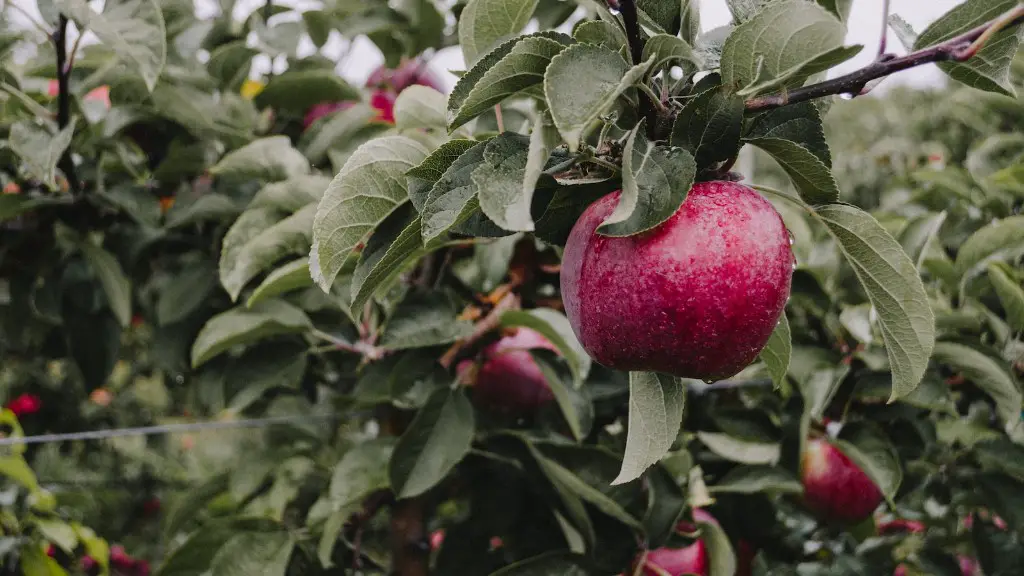Sunlight Requirements for Avocado Trees
Avocado trees need plenty of sunlight to grow and thrive. They are highly light-sensitive, so ensuring they get enough sun is essential for their healthy growth. Experienced gardeners know that good sunlight exposure is one of the most important factors in producing a successful crop of avocados. But how much may be a confusing question to many.
When it comes to sunlight requirements, an important point to remember is that avocados love the sun but they will not prosper if they become too hot and dry. Avocado trees naturally grow in habitats where there is abundant light available the majority of the year. They do, however, require protection in the late afternoon and afternoon hours to ensure they don’t receive too much sun exposure.
When choosing a site to plant an avocado tree, select one that will guarantee the best sun exposure. Ideally, the site should receive at least 8 hours of direct sunlight per day. The tree will likely require between 8-12 hours of sunlight each day to produce the most desirable crop. The tree’s foliage should be shaded from direct sunlight during the hot summer months.
When considering how much sun avocado trees need, it’s important to understand that the amount and intensity of sunlight vary from region to region. For example, in the Northern Hemisphere, an avocado tree is typically grown in areas where the tree receives a full 8 hours of direct sunlight for most of the year. On the other hand, in the Southern Hemisphere, an avocado tree may require more sunlight during the winter months and less sunshine during the summer months.
Avocado trees that receive too much sunlight are likely to become dry and dull, with lower yields. On the other hand, trees that don’t receive enough sunlight are likely to have lackluster growth and fewer fruits. To make sure your avocado tree gets enough sun, it is important to place it in a spot that receives at least 8 hours of direct sunlight each day.
In addition to providing adequate sunlight for your avocado tree, other important considerations include soil type, water, and temperature. Avocado trees like well-draining, loamy soils and thrive in areas with mild summers and cool winters. The tree should be watered regularly, making sure to keep the soil moist but not waterlogged.
While avocado trees need plenty of sun to produce delicious fruits, they must be given adequate protection from the intense midday and afternoon sunlight to ensure they don’t become too hot and dry. With the right balance of sunlight, temperature, soil, and water, your avocado tree should flourish and provide you with a bountiful harvest without fail.
Effects of Overwatering on Avocado Trees
Avocado trees are long-lived, slow-growing trees that require thorough irrigation during their establishment period and throughout their development. Even though avocado trees need plenty of water to grow and produce, overwatering this plant can lead to several problems. Overwatering your tree can even lead to root rot or death of the tree, which is why understanding the proper care for this species is important. By knowing the signs of overwatering, you can take the necessary steps to protect the health of the tree and preserve its lifespan.
The most common sign of overwatering to look out for is wilting and drooping leaves. Wilting and drooping can mean that the roots do not have enough oxygen to absorb nutrients and water, leading to dehydration. In extreme cases, the soil will be saturated and the tree will not be able to take up any water. This can cause nutrient deficiencies, root rot, and even the death of the tree. Another common sign of overwatering is yellowing leaves. Yellowing leaves are a sign of dehydration, lack of oxygen, or an accumulation of salts in the soil.
To prevent overwatering, it is important to check the soil moisture of your avocado tree. Never water your tree if the soil is saturated with water, as this will cause root rot, fungal disease, and other problems. Instead, wait for the soil to dry out and then give your tree a thorough watering. It is also important to check the drainage of the soil and adjust it if necessary, as this will ensure the roots are not getting too much water.
In addition to these tips, it is important to remember that the amount of water your avocado tree needs depends on a variety of factors such as its size, the type of soil it’s growing in, the climate and season, and the amount of sun it’s getting. Therefore, it is important to keep an eye on your avocado tree’s soil moisture and adjust your watering schedule accordingly to make sure it is receiving the right amount of water.
Fertilizer for Avocado Trees
Avocado trees require regular fertilization because they are hungry feeders and in most cases, soils lack sufficient levels of the essential nutrients they need to produce the most flavorful fruits. For this reason, fertilizing your avocado trees helps to ensure they get adequate nutrition, enabling healthy growth and a bountiful harvest.
The best fertilizer for an avocado tree is one that is high in nitrogen, potassium, and phosphorous. Nitrogen is necessary for green foliage growth, potassium helps to increase fruit production and quality, and phosphorous is essential for strong root growth. Additionally, you should look for a fertilizer that contains secondary nutrients such as calcium, magnesium, and sulfur, as these are essential for healthy foliage growth.
The best time to fertilize your avocado trees is spring and summer, when the trees start budding and the fruits will soon form. It is also important to remember that overly fertilizing can do more harm than good, so be sure to follow the instructions on the package and water your trees after applying fertilizer. Additionally, it is important to test your soil pH levels to make sure they are within the desired range (6.0-7.0) as this will ensure that the fertilizer is being absorbed properly.
Overall, it is important to remember that avocados require an adequate amount of nutrients to grow and produce the most flavorful fruits. By providing your avocado tree with the right fertilizer, you can ensure that it receives the right nutrients for healthy growth and a bountiful harvest for years to come.
Pruning Avocado Trees
Pruning your avocado tree is an essential part of its maintenance and should be done regularly to promote healthy growth and a bountiful harvest. The best time to prune your tree is in the early spring when new growth is just starting. Pruning prevents the tree from becoming overgrown and promotes healthy foliage growth and fruit production.
When pruning your avocado tree, always use sharp pruning shears and wear protective clothing. Start by removing dead, diseased, and broken branches, as well as those that are growing too close together. Next, remove shoots and twigs that are growing from the main trunk or from the lower branches, as these can prevent light from reaching the inner branches. You can also selectively prune the tree to train it to grow in a particular shape.
When pruning, always use caution to avoid damaging the tree. Be sure to make clean cuts and leave a minimal amount of stump. Additionally, it is important to prune the tree evenly, as this will ensure that all the branches get an adequate amount of sunlight.
In summary, pruning your avocado tree is an important part of its care and should be done regularly. It is important to use sharp pruning shears, wear protective clothing, and prune the tree selectively and evenly. By following these tips, you can ensure that your tree is healthy and has a bountiful harvest for years to come.
Pests and Diseases Affecting Avocado Trees
Avocado trees are susceptible to a variety of pests and diseases that can affect their growth, fruit production, and overall health. Some of the most common pests and diseases include scale insects, leaf spot, root rot, and nutrient deficiencies. Knowing the signs of these pests and diseases and taking the necessary steps to prevent and control them is essential for preserving the lifespan of your avocado tree.
Scale insects are one of the most common and destructive pests for avocado trees. These small pests colonize the trunk and branches of the tree, sucking sap from the plant and destroying the foliage. The most common sign of scale insects is deformed or discolored leaves and sticky honeydew on the leaves and branches. The best way to control scale insects is to regularly inspect your tree and spot treat them with an insecticidal soap or oil.
Leaf spot is another common disease that affects avocado trees. This fungal disease manifests as small, circular spots on the leaves which can eventually cause them to drop off. The best way to prevent leaf spot is to avoid overhead watering, as this encourages the spread of the fungus. If your tree has been infected with leaf spot, the best course of action is to apply a fungicide to the affected area.
Root rot is another issue that can quickly take over an avocado tree. This fungal disease attacks the roots, cutting off the tree’s source of nutrients and water. To prevent root rot, it is important to ensure your tree has proper drainage and water it only when the soil is dry. If your tree is already suffering from root rot, it must be treated promptly or it may die.
In summary, avocado trees are susceptible to a variety of pests and diseases that can significantly affect its growth and fruit production. Knowing the signs of these pests and diseases and taking the necessary steps to control them is essential for preserving the lifespan of your avocado tree.


